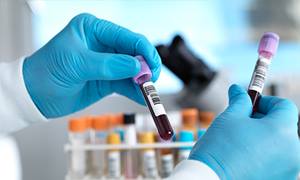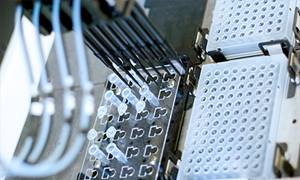
 Testing for the coronavirus COVID-19 is now a global hot topic. With countries testing different amounts, authorities calling for increasing tests, and the emergence of new kinds of coronavirus testing, we no longer just need to be armchair epidemiologists – but virologists and immunologists too.
Testing for the coronavirus COVID-19 is now a global hot topic. With countries testing different amounts, authorities calling for increasing tests, and the emergence of new kinds of coronavirus testing, we no longer just need to be armchair epidemiologists – but virologists and immunologists too.
First, the basics. The testing until now has been for the virus itself. When patients display symptoms such as a fever or a persistent cough, to see whether the coronavirus has caused the infection (and not another virus, such as the common cold) a sample of blood needs to be taken to find traces of COVID-19 genetic material. The essential problem with testing for a virus is that what you are testing for is small and there is not much of it – a detector machine could easily miss it. A process called PCR (polymerase chain reaction) is used to make millions of copies of the viral genetic code, all linked together. The viral code is thereby made much longer and therefore easier to detect. Expressed in a more precise way: the signal is amplified, increasing the test’s sensitivity.This PCR test is the one that was rapidly developed to detect COVID-19 and has been central to the identification of coronavirus patients across the world. So, with no specific treatment for COVID-19 patients, how does PCR testing help?

There are several ways. Firstly, as the early symptoms of this coronavirus are shared between many illnesses, it is important to establish which disease is causing them – as there are some specific treatments available for the non-COVID-19 diseases. Secondly, although there is not a specific coronavirus treatment now – it is only a few months old, after all – by defining the patient population, we will be able to trial potential therapies in the hope that one will be successful in the future. Furthermore, there are important public health reasons why knowing the number of COVID-19 patients is significant. By identifying a coronavirus patient, it is possible to create a list of people with whom the patient has had recent contact, who might have also caught the disease. Following contact with these people at high risk of the coronavirus, it is possible to quarantine or treat them as appropriate. This is the process of contact tracing and is an indispensable method for limiting an epidemic, especially during the early stages of the outbreak. A final way PCR testing helps a patient during an epidemic, concerns the matching of local healthcare resources with the likely case numbers of the disease that may occur. Mathematical modelling can be used to predict future cases of COVID-19 based on the number of confirmed cases - often from those admitted to hospital. The modelling is then used to predict which health resources will be required at what time. This sort of testing and evaluation is certainly essential.

Widespread community PCR testing is being advocated in many countries during the pandemic. As the outbreak becomes widespread in many countries, the effectiveness of this approach becomes less clear to see. As mentioned, identifying cases and their contacts in a limited outbreak is a powerful way to control the epidemic virus. This was recently done in South Korea, where the rapidly escalating infections within a religious group were quickly curbed. When there are tens of thousands of cases in a country, however, the ability for public health services to follow each patient and establish their close contacts, becomes logistically and economically problematic. In fact, several authorities do admit that there is a law of diminishing returns with the contact tracing approach when epidemics become increasingly large.
There is a more fundamental question about community PCR testing in large epidemics, however. In many countries, strict population control has already been instigated to limit transmission: people have been strongly encouraged to work from home, parties and gatherings prevented, and restaurants, cinemas and theatres, shut. Social distancing is being practised daily: people are even queuing outside supermarkets (with the requisite two-metre spacing) to allow uncrowded shopping for those within. Those with symptoms are confined to home; those at risk, self-isolating for weeks. Hands are being washed and tissues used for coughs. The question is this: if community PCR testing identifies a positive patient, what action will be taken to further protect society? If there is no significant action following a test, why test? As population controls increase across the world, this is certainly a question worth considering.
Attention is being turned to another test, however, that may certainly alter the outcome of the epidemic and its economic cost to us. Antibody testing for COVID-19 has recently been developed that promises to identify which of us has already been infected with the coronavirus – and therefore which of us is likely to be protected from future infection. Antibodies are part of our immune system that are produced when we encounter viruses and bacteria. One of their abilities is to bind to virally infected cells, allowing them to be killed by different mechanisms. Importantly, when the virus has been killed off, antibodies are often still present in the blood at a reduced level – able to rapidly disrupt a further COVID-19 infection, and able to be detected by a test. Thus, a positive antibody test will very likely suggest that immunity to the coronavirus has been achieved.
 This test is important. At present, we don’t know how many people have been infected with COVID-19. As many have few symptoms, it is strongly suspected that for some following infection, absolutely no symptoms are experienced – they are asymptomatic. Those with no symptoms would have no reason to be tested for the coronavirus and therefore are not included in any numbers. It’s important to know the total number that have been infected and therefore have immunity, as when future waves of COVID-19 occur, these people will cause a slower and smaller epidemic to occur. In a sense they will become a barrier to a future epidemic: unable to become infected; unable to allow viral replication; unable to pass on the virus to others. As a chief concern in an outbreak is the over-stretching of healthcare facilities, if there are appreciable numbers of antibody positive individuals, the burden on hospitals and society will likely be much reduced.
This test is important. At present, we don’t know how many people have been infected with COVID-19. As many have few symptoms, it is strongly suspected that for some following infection, absolutely no symptoms are experienced – they are asymptomatic. Those with no symptoms would have no reason to be tested for the coronavirus and therefore are not included in any numbers. It’s important to know the total number that have been infected and therefore have immunity, as when future waves of COVID-19 occur, these people will cause a slower and smaller epidemic to occur. In a sense they will become a barrier to a future epidemic: unable to become infected; unable to allow viral replication; unable to pass on the virus to others. As a chief concern in an outbreak is the over-stretching of healthcare facilities, if there are appreciable numbers of antibody positive individuals, the burden on hospitals and society will likely be much reduced.
There is an interesting corollary to this too. As the effects to society of virtual lockdown are severe, causing significant economic harm, could the ‘antibody positives’ be allowed to restart normality: going back to work, spending evenings out; seeing a film, eating pizza? Could the way out of the COVID-19 economic crisis be led by those who were the victims of COVID-19? The social effects of this two-tier society – the antibody haves-and have-nots – may certainly cause difficulties. But in these unprecedented times, novel problems demand novel solutions.







